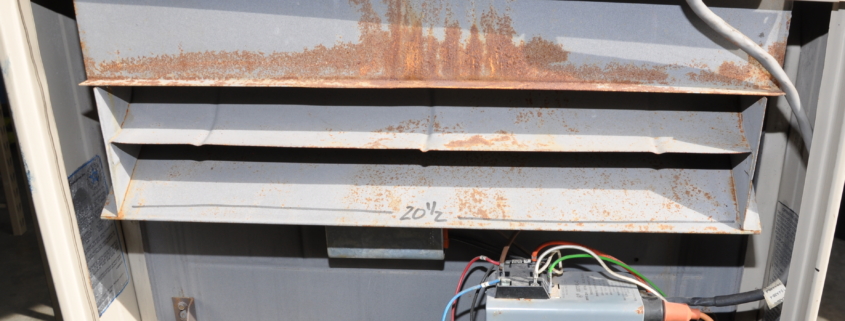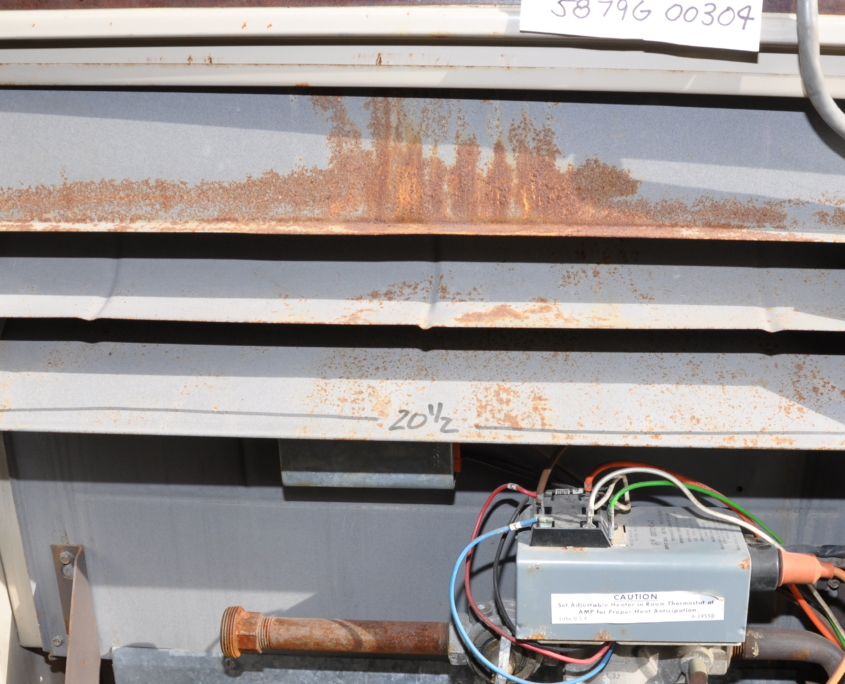
FAQ: Carbon Monoxide Poisoning in Apartment Complexes, How Does it Happen?
Carbon Monoxide Poisoning in Apartment Complexes
How did I get Carbon Monoxide in My Apartment Complex?
In most cases, carbon monoxide happens in an apartment because of a furnace malfunction. Occasionally a gas stove or oven or a gas hot water heater can be the culprit for carbon monoxide poisoning in apartment complexes.
Who is to Blame for Carbon Monoxide Poisoning in Apartment Complexes?
There are three potential parties to blame if there is a carbon monoxide (CO) event in an apartment:
- The owner of the apartment complex, (the Landlord);
- The property manager of the apartment complex (the Property Manager); or
- The HVAC company (heating, ventilating and air conditioning) that services the apartment complex (the HVAC Company).
In a small apartment complex, most of the responsibility probably lies with the Landlord. The bigger the apartment complex, the more likely a Property Manager is also responsible. The HVAC Company is most likely partially to blame if they had done recent maintenance at the property, or they had a maintenance contract. In our experience, the largest apartment complexes are the worst contributors to carbon monoxide poisoning because they think they don’t need an HVAC Company to do maintenance. Despite the theory that it is cheaper to do in-house maintenance, they rarely keep up with needed repair and replacement of furnaces.
Why did I get carbon monoxide poisoning in my apartment?
Run to failure on obsolete HVAC equipment.
When the owner of an apartment prefers to keep fixing broken parts on an obsolete piece of equipment, we call that run to failure. The larger the apartment complex, the bigger out lay of capital is required to replace all of the furnaces or other fuel burning appliances in apartment complexes. Far too many apartment complexes that were built between 1970 and 1990 still have original furnaces in them, even though the life expectancy on any furnace is no longer than 25 years. If your apartment has a furnace that is older than 25 years in it, you are at risk of carbon monoxide poisoning. The older the furnace, the simpler it seems to be to keep it repaired because it is simpler inside. But just like an old car will eventually have to have an engine replaced, the most dangerous part of the furnace, the heat exchanger, must also be replaced eventually. If something has to be replaced eventually, in a large apartment complex, it will probably not get replaced until it breaks. Thus, the term run to failure. The consequence of a cracked heat exchanger in a 1970-89 furnace can include carbon monoxide poisoning.
When Should my Apartment Furnace be Replaced?
Natural Draft Furnaces Should All be Replaced.
No natural draft furnaces should be in use anywhere in the United States, especially not in apartment complexes. These furnaces were last manufactured almost 30 years ago. Their useful life is no more than 25 years, with professional HVAC groups establishing an 18 year life expectancy. Apartment managers and landlords think they can just keep replacing the parts, until the heat exchangers fail. Consequence of a heat exchanger failing? Carbon monoxide poisoning in your apartment. Any apartment complex that doesn’t replace all natural draft furnaces is playing Russian Roulette with its tenants lives. For more on carbon monoxide poisoning concerns in an apartment click here.

Carbon Monoxide poisoning in apartment complexes is often related to problems with obsolete furnaces that are never replaced even when obvious signs of malfunction are present.
What is a natural draft furnace?
Understanding furnace types and efficiencies.
There are four basic types of furnaces:
- Gravity, no forced air. These are old behemoth monsters that look like octopuses. They should never be found in an apartment complex. They have vertical chimneys.
- Natural draft, without inducer motors. These furnaces force the supply air around the residence but rely entirely on the principle of hot air rising, to bring both combustion air to the flame and to exhaust the gas from a furnace. These furnaces are 65-70% efficient and are probably more than 30 years old. They have vertical chimneys, otherwise called exhaust pipes or flues.
- Induced combustion air furnaces. These furnaces use an inducer motor to pull the combustion air to the flame but rely on gravity to exhaust the flue gases once they have left the furnace. They have vertical flues for the exhaust gases.
- High efficiency furnaces. These furnaces use fans to bring the combustion air to the flame and exhaust the exhaust out of the furnace, when the furnace is done taking most of the heat out of the exhaust. The principle of a high efficiency furnace is to circulate the air inside the furnace so that as much heat is transferred to the primary and secondary heat exchangers before the exhaust gases are sucked out of the furnace. As high efficiency furnaces have much cooler exhaust, they are vented out the side wall of a dwelling, with the exhaust pipe usually being right next to the intake for the furnace. There may not be enough heat left in the exhaust for a vertical venting, i.e. natural draft.
Why Wasn’t an Obsolete Furnace Replaced in My Apartment?
Budgeting for Capital improvements. While a low five figure investment, a new furnace is still beyond the normal month to month maintenance budget. The larger the organization that owns and manages your apartment, the bigger outlay involved in replacing all of the furnaces at once. This is a particularly big issue when an apartment complex changes hands 20-30 years after it is built. 300 furnaces would cost upwards of a half a million dollars to replace. No financial manager wants to absorb that kind of expenditure unless it was in the budget and it isn’t likely to be put in the budget except at the time complexes change hands. But a new furnace does not generate more rent. Tenants rarely understand efficiency and are unlikely to pay more for a nice-looking apartment with a new furnace and an old refrigerator. Thus, when apartment complexes change hands, the rehab money is put into things that make it look nicer, like new flooring and countertops. New appliances are far more likely to be stainless steel refrigerators and ovens than new furnaces or hot water heaters.
Why Didn’t the Apartment Managers Realize that My Furnace was Dangerous?
The biggest reason why no one identified an obsolete furnace is that the apartment complex didn’t have a Preventative Maintenance Contract with a HVAC company. In our experience, the bigger the complex, the less likely they will bring in professionals to do the necessary HVAC maintenance. The reason: they think in house maintenance staff are competent to service the furnaces. They are not. The in-house team may be qualified to replace filters and batteries in detectors, but even cleaning the burners on a furnace is something they are not likely to do or understand.
Why isn’t the Apartment’s HVAC Tech qualified?
Inadequate Training of Maintenance Staff. Only licensed HVAC contractors should be relied upon to do the seasonal maintenance on HVAC equipment. Most large apartment complexes think they can do this work in house, but they can’t because their “techs” don’t have adequate training. The only license that most techs in apartment complexes maintenance departments have is the EPA license, which is just for replacing refrigerants in air conditioning equipment. Significantly, the primary reason that apartment maintenance techs have EPA licenses is that such is required to refill refrigerants. The EPA does not regulate furnace maintenance.
What Specific Things do Maintenance Techs Do Wrong in Apartments?
- Failure to use checklists.
- Failure to understand why something is on the checklist.
- Failure to do periodic (each season) inspection of flue pipes and combustion air ductwork.
- Failure to identify inadequate duct work, especially combustion air issues.
Insufficient Staffing in Maintenance Department.
The minimum standard for staffing in a maintenance department is one tech for every 100 apartments, plus a maintenance supervisor. Too often, these departments have 1 or 2 techs for three to four hundred-unit complexes. Often, there is no maintenance supervisor, with the apartment manager thinking that they can do this job, even though they don’t know anything about HVAC maintenance.
- Maintenance techs are not just expected to do maintenance on HVAC systems, but also to do just about everything else that needs to be done on an apartment complex. During times of high turnover of apartments, make-ready’s between tenants, may take all of the techs time.
- Quarterly maintenance always suffers when other immediate demands are made on techs time.
- Any prior experience is all a tech needs and no investigation is done to determine whether the tech did anything right on his/her last job or ever got anything other than on the job training.
Why Didn’t a Carbon Monoxide Alarm Warn Us Before an Apartment Carbon Monoxide Poisoning?
- Carbon Monoxide Alarms were Never Installed. Failure to install a carbon monoxide alarm in an apartment violates the law, in almost all states.
- Carbon Monoxide Alarms were Never Checked. Maintenance techs don’t prioritize making sure that each unit has a working CO alarm.
- Converting to Carbon Monoxide Alarms Takes too Long. When a property wide decision is made to convert from smoke detectors to combination smoke/CO alarms, it is phased in for budgeting purposes.
- Can’t Tell the Difference from Smoke Alarms. Techs can’t tell difference between smoke only alarms and combo alarms.
- No Proper Record Keeping. Complexes don’t keep records on what type of alarm is in each apartment. No schedule is kept as to when alarms should be replaced.
- Alarms are ignored. Too often the immediate advice from maintenance to the tenants is to replace the batteries. THIS IS DANGEROUS, because it resets the time frame for alarming and will double the exposure time period before it alarms again. Carbon monoxide alarms do not work like smoke detectors. When a smoke detector goes off, the hazard is both visible and can be smelled. Most of the time with a CO alarm, the hazard is invisible and can’t be smelled. Thus, the intuitive things to do when a smoke detector goes off (investigate for a fire, air out the room if it is kitchen related) are unsafe when it is a carbon monoxide alarm.
- Tenants aren’t educated as to what to do in case of an alarm. See above. If maintenance people are confused about what to do, then the tenants are even more likely to not understand what to do. We find that the only focus is on keeping fresh batteries in the unit, not understanding that it could be warning of toxic air. The first presumption must be that if an CO alarm is making noise, there is a CO hazard. If maintenance determines it is a battery issue then replace the batteries. But in all cases, assume it is an alarm unless you are 100% confident you know the difference between a chirp (battery needs replacing) or an alarm.
